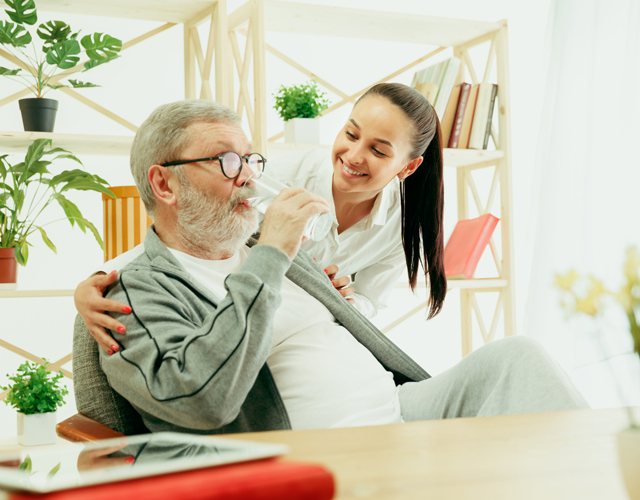Are you looking for tips on how best to offer or get incontinence care? Do you need clarification on what this is and how best to go about it? Here is a guide to enlighten you.
What is incontinence care?
Incontinence is the involuntary loss of bladder or bowel control. It can range from occasional leaks to complete loss of control. This condition affects millions of people worldwide, both children and adults.
The endpoint is that it causes physical discomfort and emotional distress. Understanding and managing incontinence is crucial for improving the quality of life of those affected.
Types of incontinence
1. Stress incontinence
Stress incontinence occurs when physical activities like coughing, sneezing, or lifting cause leakage. It happens when the muscles that support your urethra become weaker. The bladder or other organs may drop, putting pressure on the urethra.
While many people experience stress incontinence and bladder leakage as they get older, it is more common in females, according to Penn Medicine.
2. Urge incontinence
Urge incontinence, or overactive bladder, involves a sudden, intense urge to urinate followed by involuntary leakage. It can be caused by infections, neurological disorders, or bladder abnormalities.
While urge incontinence can happen to anyone, urinary incontinence is more common in older people, especially women, according to the National Institute of Aging.
3. Overflow incontinence
Overflow incontinence happens when the bladder doesn’t empty, leading to frequent dribbling. It is often associated with blockages, nerve damage, or weak bladder muscles.
Unlike other types of incontinence, overflow incontinence is more common in men than women. The most common cause in men is an enlarged prostate, which impedes the flow of urine out of the bladder, according to WebMD.
4. Functional incontinence
Functional incontinence is due to physical or mental impairments that prevent a person from reaching the toilet in time. This can include conditions like arthritis or dementia.
Functional incontinence is more common in elderly people, as many of the causes are associated with conditions that affect people as they age. For example, a person with Alzheimer’s disease may not plan well enough to reach a bathroom in time or may not remember how to get to the bathroom.
What causes incontinence?
1. Medical conditions
Incontinence can result from various medical conditions, including diabetes, multiple sclerosis, Parkinson’s disease, and stroke. These conditions affect the nerves and muscles involved in bladder control.
2. Lifestyle factors
Certain lifestyle factors like obesity, smoking, and high caffeine or alcohol intake, can contribute to incontinence. Pregnancy and childbirth can also weaken the pelvic floor muscles, leading to incontinence.
How do I know if I have incontinence?
Common symptoms of incontinence include:
- Frequent urination
- Urgency
- Leakage during physical activities.
- Nocturia (frequent urination at night)
- Constant feeling of a full bladder.
Impact of incontinence on quality of life
Incontinence significantly impacts quality of life, leading to social isolation, embarrassment, and reduced physical activity. It can also strain personal relationships and cause emotional distress.
The importance of incontinence care: where we come in!
Proper incontinence care is essential for maintaining dignity, hygiene, and overall health. Without appropriate care, individuals can suffer from skin infections, urinary tract infections, and severe psychological effects like anxiety and depression.
Effective care strategies can significantly enhance the well-being of individuals with incontinence. That’s where we come in!!! Amazing Home Care has caregivers who can adequately care for patients managing this condition effectively.
10 ways to offer incontinence care
1. Understand the patient’s needs
Creating a personalized care plan is vital. Each person has unique needs based on their type and severity of incontinence. Tailoring care to meet the needs of specific people is crucial.
2. Maintain hygiene
Proper cleaning techniques are essential to prevent infections and skin issues. Regular washing and using mild soaps can help maintain hygiene. You can refer to our guide on personal hygiene tips for tips.
3. Use incontinence products
Various products are available to help with incontinence, including pads, adult diapers, and protective underwear. Choosing the right product is crucial for comfort and effectiveness.
4. Adequate skincare
Preventing skin irritation involves using barrier creams and keeping the skin dry. Regular inspection for signs of irritation or infection is also important.
5. Dietary adjustments
Certain foods and drinks can aggravate incontinence. One way to manage incontinence is to avoid caffeine, alcohol, spicy foods, and acidic fruits, which can help manage symptoms. Including fiber-rich foods can prevent constipation, which can worsen incontinence.
6. Bladder training
One incontinence care practice is bladder training. This involves scheduled urination and delaying voiding to increase bladder capacity. Also, it can help reduce the frequency and urgency of urination.
7. Pelvic floor exercises
Pelvic floor exercises, or Kegels, strengthen the muscles that control urination. Regular practice can significantly improve bladder control.
8. Medications
Medications like anticholinergics, alpha-blockers, and topical estrogen can help manage incontinence. These should be prescribed by a healthcare professional.
9. Lifestyle changes
Simple lifestyle changes like weight loss, quitting smoking, and reducing fluid intake before bedtime can reduce incontinence episodes.
10. Support and counselling
Emotional and psychological support is crucial for individuals with incontinence. Counseling and support groups can help them cope with the condition and improve their mental health.
Does someone undergoing incontinence care need a caregiver?
Yes, caregivers play a vital role in managing incontinence. They provide physical and emotional support, assist with hygiene, and ensure the patient follows their care plan. Educating caregivers on proper techniques and strategies is essential for effective care.
Conclusion
Incontinence care is essential for enhancing the quality of life of those affected. By understanding the condition, using the right products, maintaining hygiene, and providing emotional support, we can help individuals manage their symptoms effectively.
FAQs
1. How can I prevent skin irritation caused by incontinence?
Regular cleaning, using barrier creams, and keeping the skin dry can prevent irritation.
2. Are there any exercises that can help with incontinence?
Yes, pelvic floor exercises or Kegels can strengthen the muscles controlling urination.
3. What role do caregivers play in incontinence care?
Caregivers provide physical and emotional support, assist with hygiene, and ensure the patient follows their care plan. If you are in Indiana, Amazing Home Care is there for your service.
We hope you find this guide helpful.
If you are looking for a home care agency with personalized client care plans, we pride ourselves on being the best home care agency with affordable pricing in Indiana.
You can reach out to us via phone at

